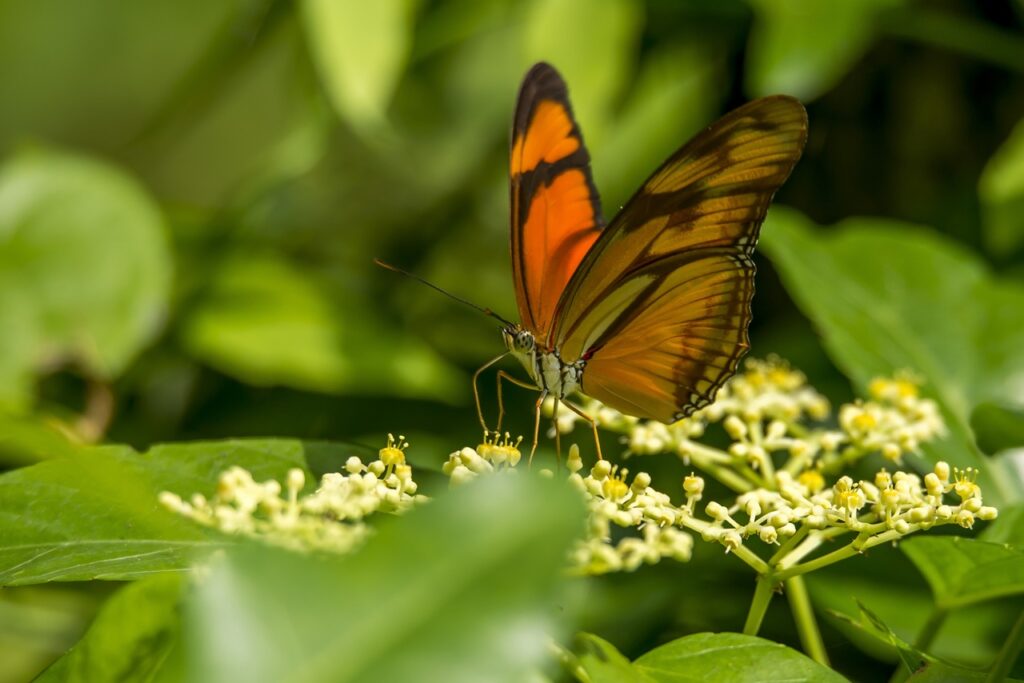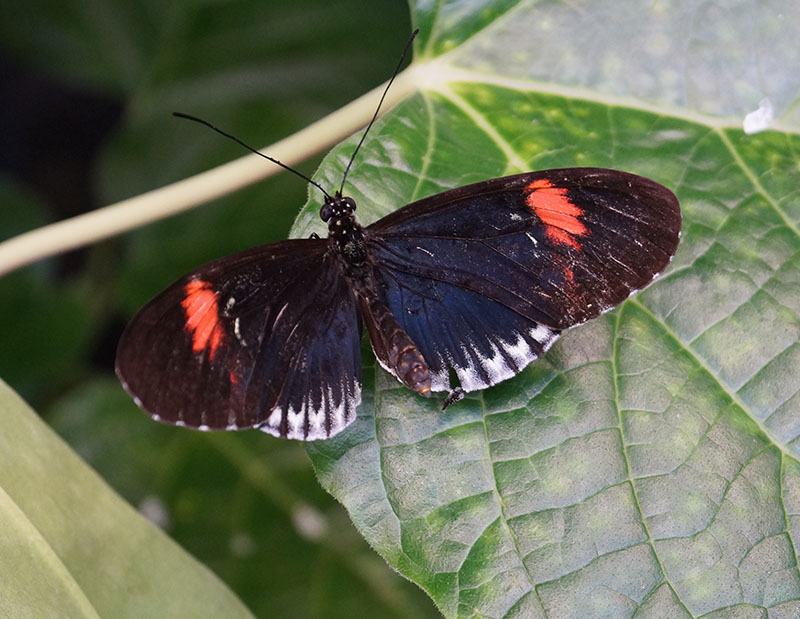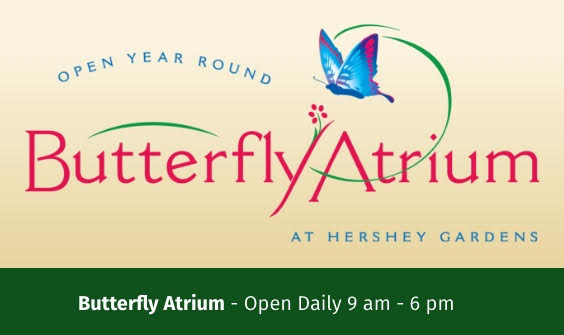Turn your yard or balcony into a butterfly oasis
From simple planters to more complicated landscaping, you can create your own butterfly hangout. Planting a butterfly garden provides new habitat for butterflies and additional wildlife. The overuse of chemicals and habitat loss has caused a major decrease in many butterfly populations. Butterfly gardens are a way to create beauty and help wildlife in need. Hershey Gardens is doing its part by hostng a pollinator friendly wildflower field to our grounds in addition to our monarch waystation and thousands of nectar plants.

Butterfly Gardening Basics
- Learn about the butterfly species in your area and encourage them to live in (not just visit) your garden by planting both nectar food for adults and host plants that serve as food for caterpillars.
- Design your garden using information gathered on local butterflies, their nectar sources and larval food. Try to extend the bloom period from May through October.
- Heirloom (old-fashioned, non-hybridized) species tend to have more nectar, more scent, and more appeal to butterflies. Many garden catalogues indicate which plants attract butterflies.
- Butterflies are extremely sensitive to pesticides and lawn chemicals. In fact, the presence of dandelions, clovers, and other “weeds” in your lawn may actually attract more butterflies. If possible, plant your butterfly garden far from your driveway and other possible sources of pollution and disturbance.
- Provide sunny areas for basking (such as heat absorbing rocks), shelter from wind, and muddy areas for puddling.
- As some eggs, larvae, and pupae spend the winter on twigs, branches, and dead leaves, it is better to cut back a garden early in the autumn in order to avoid discarding them along with your yard waste.
What to Plant
To have a truly successful and interesting butterfly garden you should plant both nectar and larval host plants. The host plants are the caterpillar food and the nectar plants provide butterfly food.
Different regions of the country have can grow different plants and have different populations of butterflies. Two resources can help determine which plants are suitable for the region and one gives the specific plants best suited for your region.
USDA
http://planthardiness.ars.usda.gov/PHZMWeb/
Pollinator Partnership
http://pollinator.org/guides.htm



